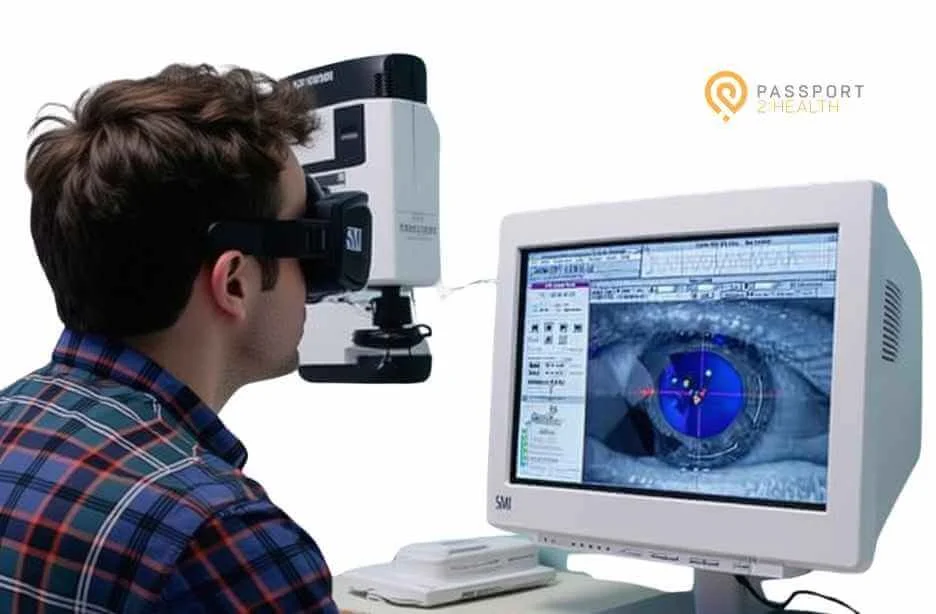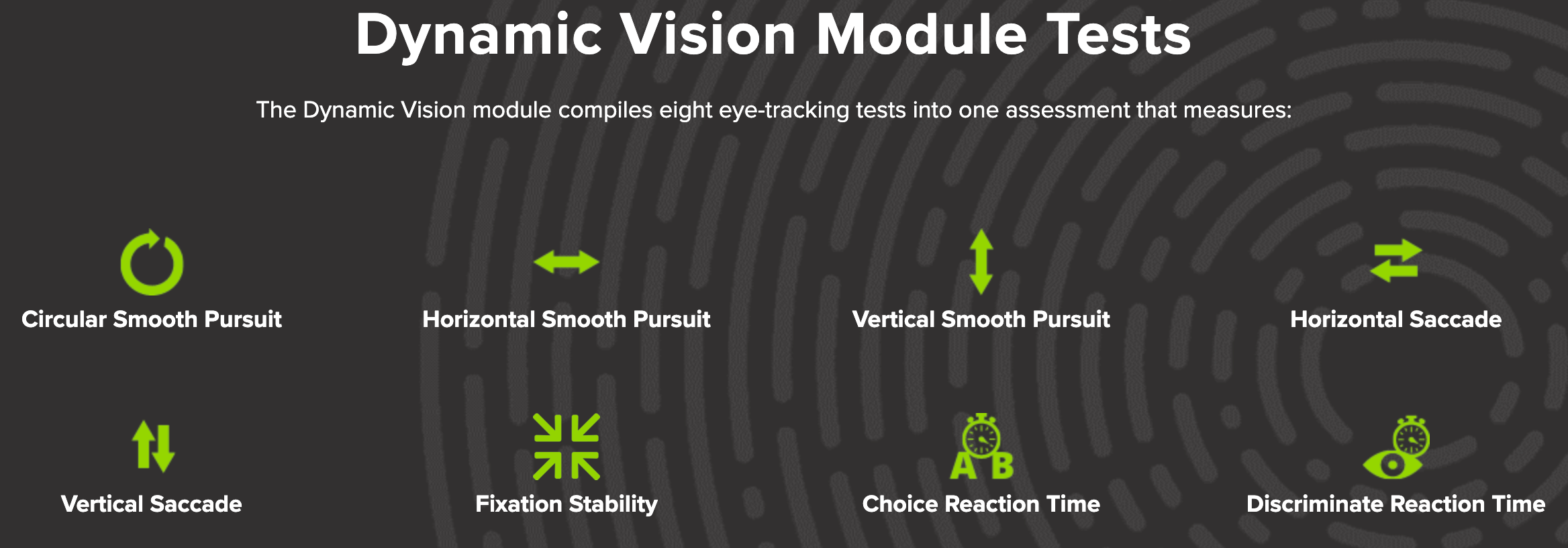How Eye Movements Reveal Early Signs of Neurological Disease
Eye movement research has proven to be a non-invasive biomarker that aids in the diagnosis of neurodegenerative and cognitive diseases. These biomarkers provide reliable baseline metrics that identify irregularities in brain function.
Early-stage diseases are often challenging to detect, but eye movement testing has proven to be a cost-effective method for early detection of:
Parkinson’s disease (PD)
Alzheimer’s disease (AD)
Multiple sclerosis (MS)
Autism spectrum disorder (ASD)
Traumatic brain injury (TBI)
Schizophrenia
TBI frequently disrupts oculomotor function, making eye tracking a sensitive tool for identifying cognitive deficits, especially important for athletes and accident survivors [1]. Research also suggests structural differences in the cerebellum influence saccadic eye movements in autism, helping refine diagnosis in a condition that often presents itself differently in boys and girls [2].
Long-Haul COVID-19 Neurological Changes
In addition to the known neurodegenerative disorders, there's growing evidence that suggests that COVID-19 impacts the brain, even in individuals who experienced only mild respiratory symptoms [3].
A video-oculography study identified eye-movement alterations in patients with post-COVID symptoms, suggesting the virus may have lasting neurological effects. Many clinicians anticipate a rise in post-COVID movement disorders and cognitive issues in the near future. Eye-tracking provides an objective and non-invasive method for detecting these changes early.
Why Sex Matters in Research
Complex neural networks control eye movements, and research shows that males and females naturally perform these movements differently.
Medical research has historically relied on data that is predominantly male-dominated. Female data is essential for accurate diagnoses and equitable healthcare. A comprehensive scientific study by RightEye revealed statistically significant differences across all eye-movement functions between men and women.
By establishing sex-specific benchmarks, healthcare providers can:
gain a deeper understanding of female physiology
make accurate diagnoses
personalize therapy more effectively
Sex-specific eye-movement data may also improve the accuracy of machine-learning classifiers used for early detection, especially for diseases that show different patterns in women, or are specific to women, such as Post-Partum Depression.
Low-Cost, Non-Invasive, and Highly Accurate
Eye tracking requires minimal resources compared to traditional neurological testing, making it a practical tool in both specialty and primary care settings.
When combined with demographic and cognitive assessments, eye-movement metrics can help predict mild cognitive impairment (MCI), a precursor to Alzheimer’s disease, with greater accuracy. Incorporating sex-specific data further improves accuracy, addressing the long-standing bias in cognitive and neurological research.
As a functional neurologist, I’ve spent the past decade helping patients overcome chronic pain, balance disorders, and neurological conditions through advanced, integrative care. Eye-movement testing is an essential part of that process.
Eye movement tracking test
Eye movement biomarkers have the potential to transform clinical care by:
Detecting disease earlier
Reducing diagnostic costs
Tracking treatment effectiveness
Improving outcomes throughout the lifespan
At our Northern California clinic, we utilize modern eye-tracking technology to record and analyze oculomotor patterns, far beyond what can be observed in a standard eye exam or neurological examination. This helps us identify the root cause of symptoms and design personalized therapies that include innovative treatments such as low-level laser therapy.
Citations
Mani, R., Asper, L., & Khuu, S. K. (2018). Deficits in saccades and smooth-pursuit eye movements in adults with traumatic brain injury: a systematic review and meta-analysis. Brain Injury, 32(11), 1315–1336. https://doi.org/10.1080/02699052.2018.1483030
Freedman EG, Foxe JJ. Eye movements, sensorimotor adaptation and cerebellar-dependent learning in autism: toward potential biomarkers and subphenotypes. Eur J Neurosci. 2018 Mar;47(6):549-555. doi: 10.1111/ejn.13625. Epub 2017 Jul 12. PMID: 28612953; PMCID: PMC11800192. https://pubmed.ncbi.nlm.nih.gov/28612953/
Ghosh, R., Biswas, U., Roy, D., Pandit, A., Lahiri, D., Ray, B.K. and Benito-León, J. (2021), De Novo Movement Disorders and COVID-19: Exploring the Interface. Mov Disord Clin Pract, 8: 669-680. https://doi.org/10.1002/mdc3.13224


